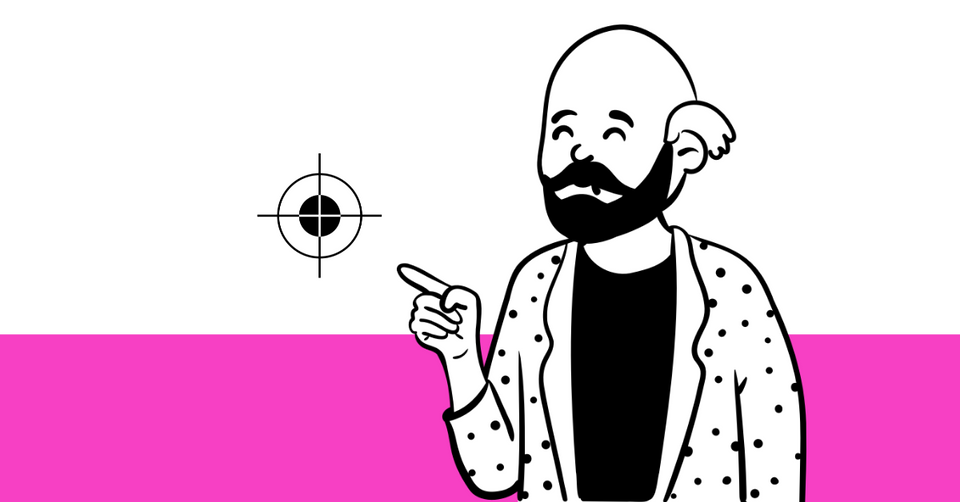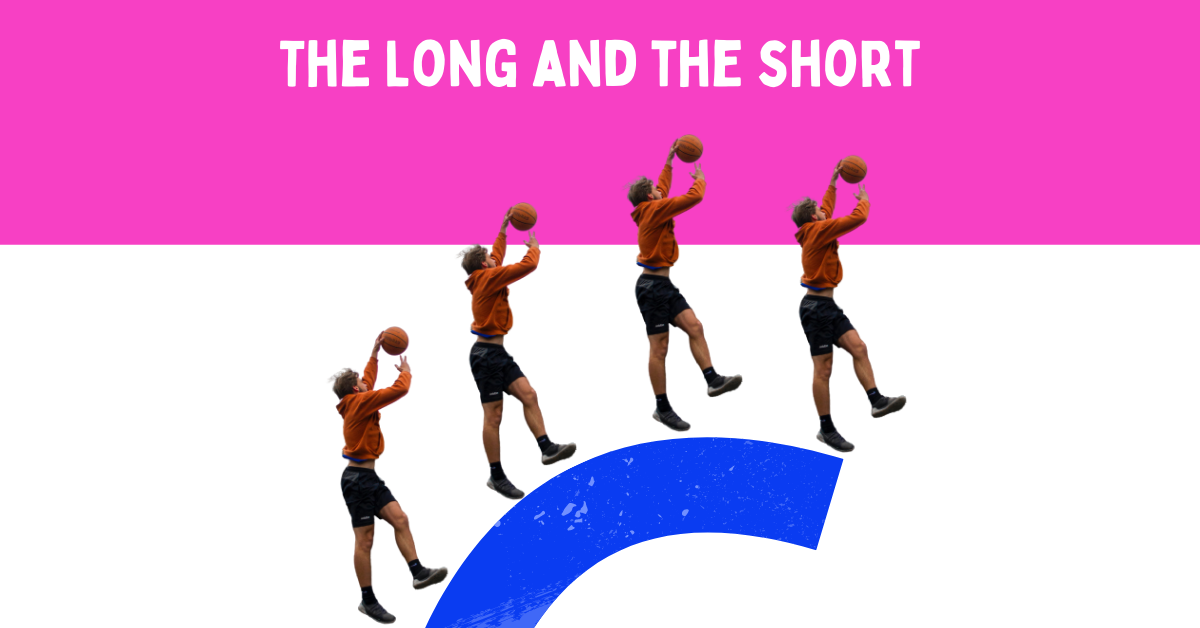Your next market targeting strategy must highlight these two things

If marketing segmentation is your map, targeting is your road trip
Wait! Before you read this, do you have a market map? If not, click here to read up on market segmentation - aka building your market map.
A complete market segmentation gives us a map of our entire market. That map gives lets us plan exactly where in the market we're going to play and where we're not going to play. This is the heart of targeting - choosing which segments matter most right now. Imagine pointing at a map and saying "We're going there!"
"Strategy before tactics" becomes a reality with market segmentation and the ability to identify why we target certain groups is often the missing piece in marketing strategy.
Proper market segmentation enables strategy
A properly segmented market has nothing to do with us, our companies, or what we sell. Segmentation means focusing on the needs and the makeup of the market so we can understand and plan.
Targeting says we will not play there
Keeping with the road trip analogy, I'd like to talk about a 12-month trip my family and I took a few years back.
We spent 2019 living and traveling in a caravan (trailer to any fellow Americans reading) around Australia. An incredible, life-changing trip!! Planning was easy because the map is already drawn for us, complete with roads and city names and in-depth guide books on every destination big and small.
I worked remotely as we traveled, so I needed internet access. That put boundaries on how far we traveled into the bush. There were segments we chose not to play in.
We also knew that we wanted to be in certain parts of the country during each season, making sure we weren't up north during the hot hot summer, or down the bottom in the cold and windy winter.
Having the map and these constraints made planning the trip easy. But imagine if we didn't have a map or any constraints. The trip would have been a day-by-day adventure (as it often was), setting off to explore the untouched boxes on the map that we were drawing.
Marketing without a complete segmentation feels like wandering around the country, hoping we're going the right way. It feels like going on an adventure to discover new lands, just like Burke and Wills or Lewis and Clark.
But what makes for an adventurous road trip does not make a good marketing strategy. Wandering around with a vague sense of direction while hoping not to run out of fuel is not a strategy I want as a marketer. Not when there is so much information available and segmentation maps are so easily drawn.
Understanding targeting
Targeting is your strategy
The essence of strategy is choosing what not to do. ~Michael Porter
If segmentation is mapping our market, targeting is how we decide where we're going and how we'll get there.
Market segmentation offers clear choices of who to target and, equally as important, who not to target. We identify groups of people or businesses who need what we sell and who are profitable to sell to.
Marketing strategy is simple. It's about two things:
- Who we target
- Who we don't target
Targeting everybody is a losing strategy, but maybe not all the time. Let's see why.
Successful companies plan for long term and short term... at the same time

As marketers we can define broad markets and cast a wide net to target everyone in them.
We can also draw detailed segmentation maps to find smaller groups of customers who already buy from us, are easy to reach, and offer quick returns.
A third option is to develop a long-term strategy that incorporates both approaches. This includes long-term brand-building campaigns targeting everybody for years and short-term, ROI-driven campaigns lasting months.
The result is long-term growth, stronger brand recognition, and the ability to generate more immediate revenue. The combination of the long and the short not only grows our business, but it raises the floor on which our revenue sits.
Mark Ritson describes this as "two-speed" targeting and uses a basketball analogy to describe it: the alley-oop.
Long-term marketing and branding is the long pass. The slam dunk is short-term activation and performance marketing.
Choosing who to target
Which segment or segments should we target? How many segments do we need to target?
Armed with proper segmentation - meaning there is little to no overlap between segments - answering those questions gets much easier. When we have to choose who to target, market research and our segmentation maps help us answer:
- Where are the biggest opportunities?
- Where is competition weak where we can be strong?
- Where can we deliver what customers need and want?
- Who has money and who doesn't?
- Which segments influence other segments to buy?
By understanding the makeup of a total market, we have the choice of which segment (or who) to target. And remember, we can target the whole market with long-term planning and individual segments with shorter-term campaigns.
Do we need an actual map of the market?
Let's look back on the 2019 road trip. We needed to see the entire map of Australia to figure out where we wanted to play and when. Without the map, we would be playing with incomplete information and it's less likely we would have gotten where we wanted to go. Not only that, but we might have picked the wrong place to be at the wrong time of year.
For example, the Pilbara is stunningly gorgeous but it reaches 110+ degrees in the summer and that kind of heat sucks in a caravan.
Back to marketing.
Complete segmentation gives us superpowers. We can see lines of influence between segments. We can see who buys and when. We can plan for both short- and long-term impact.
Segmentation in action
Abercrombie & Fitch knows their market segments. The brand is clearly aimed at young, popular kids. Everything about the Abercrombie brand is tailor-made for the cool kids. That's the target segment.
But the beauty of targeting cool kids segment on a mass scale is that the young cool kids influence what less-young, less cool people want to buy. Yup, 18-year olds with all their hair and abs that pop wear A&F. And when those 18-year olds wear A&F, the 30-year olds who don't feel past their prime (yet) see that and shop there too.
Abercrombie & Fitch understands that the 18-year old crowd influences the 30-year old crowd and targets accordingly. Get the 18-year olds buying and the rest will follow. The best part is that A&F doesn't even have to target the 30-year olds - that part is done for them.
Create an accurate segment portrait (aka Personas, baby!)
Once we know where we're playing, we need to understand who we're targeting. Now we create a profile of our potential customer by answering these questions:
- Who is the customer? Get as much demographic info as possible.
- What do they currently think? Attitudes, beliefs that let us define them and how they're different from other customers.
- What do they currently do in the category? Do they buy or not buy? Which brands do they buy? Are they loyalists? Describe their specific behavior.
- What turns them on? What are their key drivers and what turns them on that motivate them to do the things we want them to do?
- What turns them off or acts as a barrier? What keeps them from buying? What gets in the way or causes them to reconsider?
Don't be so *#$& positive
A good segment portrait - or persona - should be quite miserable, difficult, and fussy. Consumers are difficult buggers and our target segments are no different. Don't forget to include the things that piss them off or make them cringe. Use feedback from current customers to highlight what people like, but also what they really don't.
Targeting is life
On a personal note, this lesson opened my eyes to just how wrong I've done targeting. I've spent days and weeks pouring over markets and segments to learn about the people in them and to build in-depth persona profiles that allow me to connect with the right people.
But I rarely knew if those personas were the "right people". I didn't have my segmentation done, which made my targeting more like guess work than strategic planning. We can build creepily detailed personas, but if those personas match a slim market segment with little to no buying potential then what's the point?
Five things to remember next time you review your targeting
- Targeting starts with a good understanding of your market. Segmentation lets us know who is in our market and who we can target.
- Targeting is the first part of our marketing strategy. We need to highlight two important things: who we will and who we will not target.
- Short-term vs long-term planning is a false choice. Two-speed marketing cover long-term goals and short-term activation.
- Some segments will influence others. We don't need to target each segment to influence them. Remember Abercrombie and Fitch - target the cool kids and let them do your marketing for you.
- Good personas come from good market segmentation. It pays to understand which segments are worth developing personas.
This is the fourth post in a series on marketing. Here's a full list of the other posts. I'll update each one with links as soon as they're published.
- How epic companies like Nike and Amazon grab advantage with market orientation
- How to do market research for a startup (from a Saas product marketer)
- Market segmentation? Unwrap the best way to nail your marketing strategy
- What is market positioning and where does it fit into your marketing strategy?
- Objectives (coming)
- Product (coming)
- Pricing (coming)
- Integrated Marketing Communications (coming)
- Distribution (coming)



